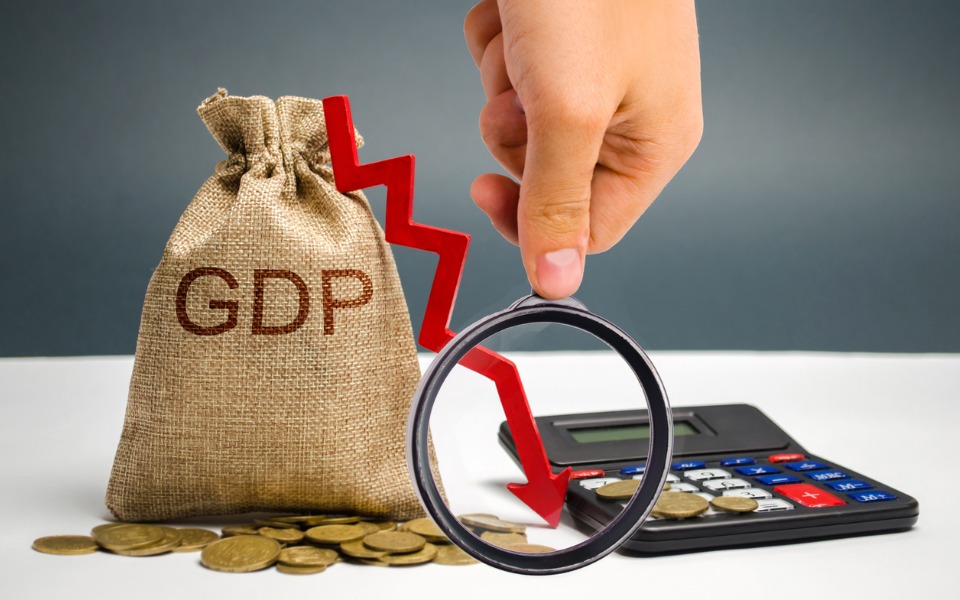
GDP@4.2: Modi govt has flattened economy with just a nudge from COVID

Once upon a time in India, the BJP’s pet riff was whether the US dollar would hit 75 before the then Prime Minister Manmohan Singh. Since economy is best understood by many through such jokes, here is one for the ages: What will hit zero first, the coronavirus graph or the Indian economy?
The answer, if you have been following the phrase of the millennium—flattening of the curve—is a no brainer. At the rate the curve of the Indian GDP is being flattened, it will not just hit zero in the next quarter, but would most likely turn negative. The virus, of course, would likely continue to grow at an annual rate India once imagined for its GDP—10 per cent, albeit on a daily basis.
So, we have something that sounds like an apocalypse—an economy hurtling down on its own, and a pandemic pushing it from above. Add to that a government that’s completely clueless. As Ghalib once said, though in a different context, is there any other name for qayamat (doomsday)?
The latest GDP figures released on Friday (May 29) are shocking. The combined figure for the previous financial year shows India’s growth rate was just 4.2 per cent. This is the lowest GDP figure in two decades, if you ignore the sub-prime crisis years. Also, the growth rate has been falling steadily for more than ten quarters now. In 2020, it fell to 5.2 per cent in the first quarter and then plummeted to 4.4, 4.1 and 3.1 per cent respectively over the next three quarters (July-March).
The figure for the last quarter—3.1 per cent—is slightly higher than what experts had predicted. Since the last two weeks of March were a washout because of the COVID lockdown, the growth was expected to be around 2 per cent. But, even this bit of new isn’t something to be optimistic about. One, this figure is higher primarily because of the 5.9 per cent growth in agriculture—a sector that wasn’t affected by the lockdown. Two, it is a provisional figure and may be revised in the future, just like the growth rates for the first three quarters were pared down after a revision.
What do these figures tell us? Plenty.
It is now apparent the Narendra Modi government hasn’t been able to revive the economy. Its so-called bailout packages, concessions to corporates, and other stimuli announced in the previous year have had the same effect that most drugs have on coronavirus—zilch.
Since the government has already missed the targets it had set, implementing some of the existing programmes and schemes would be difficult for Modi and his ministers (lower growth means lower revenues, lower revenues mean diminished spending power). And, we have not even started talking about the additional money the government will have to spend to deal with the impact of the pandemic on the economy. Let’s just say the government is like a family that has no food for itself but will now have to feed an entire infirmary.
The most worrying part of this tragic story is that the economy fell to 3.1 per cent—remember, the figure is provisional—after just two weeks of the ongoing lockdown. Since the first eight weeks of the current quarter have been more or less under a draconian lockdown, the GDP is likely to contract—turn negative—for the April-June period. And, since there is no medical solution in sight for the pandemic, since migrants are unwilling to return in a hurry and revive the economy, since many enterprises are likely to go bankrupt, and since many household incomes are likely to turn zero because of widespread lay-offs and failure of businesses, India’s financial future appears grim under a clueless government.
India has so far survived on hope—the belief that Modi will do something to revive the economy. But, in practise, the Modi government has achieved the exact opposite—it has taken the economy from an OPD to the emergency room, and from the emergency room to the ventilator. For how long India will continue to live on hope is a question nobody can answer when its chief purveyor is a craftsman called Modi.
What can be easily predicted is this: First the government blamed Jawaharlal Nehru for its failures. Then it deflected criticism towards the Congress, liberals, intellectuals, seculars and the “go-to-Pakistan” gang. At opportune times in its life, it was able to divert public attention from the economy through surgical strikes and air-raids on Pakistan. Two years later, we’ll all be hearing the government say: Mitron, we were about to become a $5 trillion economy, but coronavirus pegged us back by $ 2 trillion.


